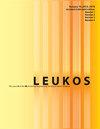对皮肤颜色还原的偏好
IF 2.6
2区 工程技术
Q2 CONSTRUCTION & BUILDING TECHNOLOGY
引用次数: 0
摘要
关于光源如何渲染物体颜色的群体偏好,如TM-30-20 (ANSI/IES 2020)的附录E和F中所提炼的,我们已经知道了很多。然而,群体和亚群体对光源如何渲染皮肤的偏好是一个缺乏证据的领域。这是一个明显的缺点,因为人是照明的主要受益者。肤色偏好是一个具有文化内涵的挑战性科学问题。皮肤光谱反射函数(srf)通常报告为小面积皮肤的平均值,通常在手臂或手的某些部位测量。虽然肤色较深或较浅的人在平均反射率上有变化,但光谱特征的变化并不像人们可能期望的那样大(例如,Angelopoulou 2001;Cooksey et al. 2019)。假定的含义是,它可能是有可能合理地预测一个范围的皮肤srf与少量样品的色移。然而,就肤色而言,平均班次不能说明全部情况。如果一个玩具或一件衣服的颜色被光源改变了,那就不是个人的。但如果光源以一种不受欢迎的方式扭曲了一个人的皮肤,那么这本质上是个人问题。评估皮肤状况更加复杂,因为皮肤不是同质的,不能用单一的SRF来代表,肤色是动态的,基于血流量和其他因素,偏好因种族而异,可能因种族而异,可能因文化而异,也可能因个体特征而异。例如,有些人可能更喜欢与红色色度增强光源相关的更红润的皮肤外观,而其他人可能不喜欢(例如,那些中性或冷色调,斑驳的皮肤或皮肤状况)。有一些证据可以证明文化差异。一些证据表明,平均而言,白种人比亚洲人更喜欢颜色的变化,从而使肤色更红润(Wei et al. 2014)。TM-30-20不包括与皮肤外观相关的特定设计意图或设计指南。这并不是因为缺乏兴趣,而是因为没有足够的知识来提出站得住脚的建议。“需要更多的研究”是研究人员的共同呼声,但在这种情况下,这种呼声是真实的。如果未来的工作包括一个民族、种族和文化多样化的研究团队,有助于新实验的概念化和设计,以及一个多样化的参与者群体,允许基于民族、种族和文化的分析,这将是令人鼓舞的。这种细粒度的信息可以让我们更深入地了解不同人群对光线的感受,并可能为光谱定制照明解决方案提供机会。本文章由计算机程序翻译,如有差异,请以英文原文为准。
Preference for the Color Rendition of Skin
Quite a bit is known about group preference for how light sources render object colors, as distilled into Annexes E and F of TM-30-20 (ANSI/IES 2020). One area that is weakly substantiated, however, is group and subgroup preferences for how light sources render skin. This is a conspicuous shortcoming because people are intended to be the primary beneficiaries of lighting. Preference for the color rendition of skin is a challenging scientific problem with cultural implications. Skin spectral reflectance functions (SRFs) are generally reported as averages over a small area of skin, usually measured on some part of the arm or hand. While people with darker or lighter skin have variation in mean reflectance, the spectral features do not vary as much as one might expect (e.g., Angelopoulou 2001; Cooksey et al. 2019). The presumed implication is that it may be possible to predict reasonably well the color shift of a range of skin SRFs with a small number of samples. With skin, however, average shifts should not be expected to tell the whole story. If the color of a toy or piece of clothing is altered by a light source, it is not personal. But if a light source distorts a person’s skin in a way that is undesirable, then that is intrinsically personal. Evaluating skin rendition is further complicated because skin is not homogenous and cannot be represented in a single SRF, skin tone is dynamic based on blood flow and other factors, and preference varies with ethnicity, may vary with race, may be informed by culture, and may vary with individual characteristics. For example, some people may prefer the ruddier skin appearance associated with red-chroma-enhancing light sources, while others may not (e.g., those with neutral or cool undertones, mottled skin, or a skin condition). There is some evidence for cultural differences—e.g., some evidence suggests that, on average, Caucasians prefer a color-shift that causes a ruddier complexion more so than Asians (Wei et al. 2014). TM-30-20 does not include a specific design intent or design guidance related to skin appearance. This not because there is lack of interest, but because there is not enough knowledge to produce defensible recommendations. “More research is needed” is a common cry among researchers, but in this case the cry is true. It will be inspiring if future work includes an ethnically, racially, and culturally diverse research team that contributes to the conceptualization and design of new experiments, and a diverse set of participants that permits analyses based on ethnicity, race, and culture. This sort of granular information would provide deeper understanding of how different groups of people experience light and may open opportunities for spectrally tailored lighting solutions.
求助全文
通过发布文献求助,成功后即可免费获取论文全文。
去求助
来源期刊

Leukos
工程技术-光学
CiteScore
7.60
自引率
5.60%
发文量
19
审稿时长
>12 weeks
期刊介绍:
The Illuminating Engineering Society of North America and our publisher Taylor & Francis make every effort to ensure the accuracy of all the information (the "Content") contained in our publications. However, The Illuminating Engineering Society of North America and our publisher Taylor & Francis, our agents, and our licensors make no representations or warranties whatsoever as to the accuracy, completeness, or suitability for any purpose of the Content. Any opinions and views expressed in this publication are the opinions and views of the authors, and are not the views of or endorsed by The Illuminating Engineering Society of North America and our publisher Taylor & Francis. The accuracy of the Content should not be relied upon and should be independently verified with primary sources of information. The Illuminating Engineering Society of North America and our publisher Taylor & Francis shall not be liable for any losses, actions, claims, proceedings, demands, costs, expenses, damages, and other liabilities whatsoever or howsoever caused arising directly or indirectly in connection with, in relation to, or arising out of the use of the Content. Terms & Conditions of access and use can be found at http://www.tandfonline.com/page/terms-and-conditions .
 求助内容:
求助内容: 应助结果提醒方式:
应助结果提醒方式:


